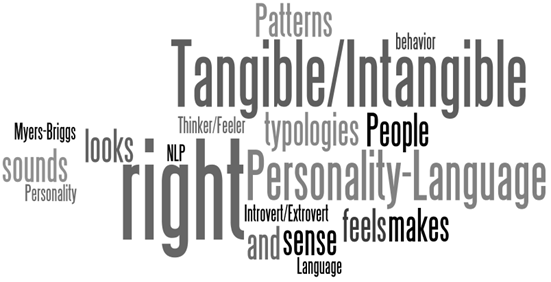ARE ALL TYPES THE SAME?
PEOPLE PATTERNS™ VS MEYERS-BRIGGS – PART II
 In the first part of this discussion, we discussed the two points: 1) the concept of typologies from a perspective of formal logic and 2) the different forms of typologies. As mentioned, Meyers-Briggs presents immutable boxes or preferences, whereas we know that types can be changed, given our work in behavioral change technologies. Second, we discussed how Meyers-Briggs and People Patterns™ are what we refer to as horizontal typologies.
In the first part of this discussion, we discussed the two points: 1) the concept of typologies from a perspective of formal logic and 2) the different forms of typologies. As mentioned, Meyers-Briggs presents immutable boxes or preferences, whereas we know that types can be changed, given our work in behavioral change technologies. Second, we discussed how Meyers-Briggs and People Patterns™ are what we refer to as horizontal typologies.
Now we are going to present the third concept that relates to typologies, that of contextuality. It is critically important to realize that all behavior is context dependent. This is one of the fundamental principles of NLP. In fact, all behaviors change depending on the context in which they occur. What this means is that you may behave or act in a particular way, for example, in a work context, while at home, you behave totally differently because it is a different context. So in one context, you’ll behave one way, and when you shift contexts, your behavior shifts as well. With People Patterns™, we constantly emphasize that they are context dependent. Myers-Briggs does not take this into account.
The notion of context and contextuality in our typologies (in this case, People Patterns™) is critically important. It is a concept that is a vital component to all behaviors, and thus, to typologies. Context, for our People Patterns™ takes into account several elements:
-
Where you are (for example in work, at home, at school, driving, etc.)
-
What are the circumstances in which you are behaving a certain way
-
When are you behaving a particular way
Now let us consider the fourth concept regarding typologies, that of deep structure and refinement. What we call People Patterns™ that make up one’s Personality Language™ goes beyond what the four Meyers-Briggs categories cover in their scope. People Patterns™ take the types to a deeper and more nuanced understanding of what is involved:
Sensor/Intuitor: our Tangible/Intangible People Pattern™ is more refined.
Introvert/Extrovert: our Internal/External People Pattern™ is more refined.
Judger/Perceiver: our Structurist/Free Spirit (through time/in time dichotomy) People Pattern™ is more refined.
Thinker/Feeler: Our Decision People Pattern™ (looks right, sounds right, feels right and makes sense) is more refined. Also, the Chunk Size People Pattern™ clarifies this Meyers-Briggs preference.
Now, our People Pattern™ Profile is different from others that are out there in that we are not looking for content based responses. Our work is based on decoding what I refer to as the deep structure (as in linguistics), and here, the deep structure of the psyche. In this case, it is the deep structure of your thinking and of your behavior, rather than the specific content.
At another time, we will discuss the deep structure differences between the two typologies a bit more.
***************************
Marilyne Woodsmall is one of the most sought after Human Modelers in the World. She and her Husband, Wyatt Woodsmall have worked with some of the most successful companies and Athletes out there. They help businesses and individuals reach the highest performance levels possible. You can find more information about them and what they do at www.TheScienceOfidiots.com. Their book Personality Language ™ can help you and your business go beyond where you are now.